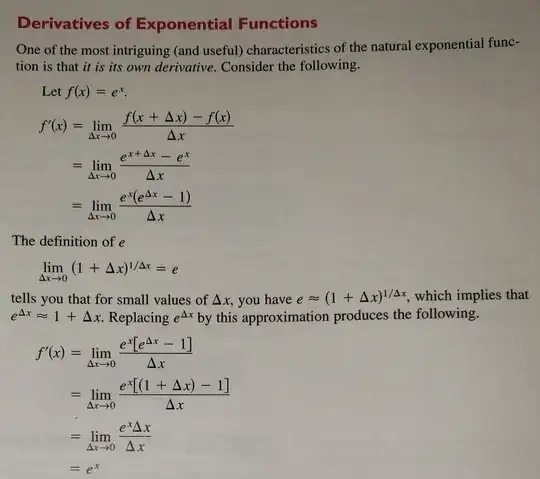I am teaching my students about the derivative of $e^x$. I have walked through what is in our textbook and they have all happily believed me, but I would like to have a better explanation for why the derivative is $e^x$. I know several other proofs exist like those that define $e$ using the slope at $0$ and those that use the natural log, but I'd like my proof to closely follow the method used in the textbook. That is why this question and this question have not answered all of my questions. Here is what the textbook says.

I understand everything until they decide to let $e^{\Delta x}\approx 1 + \Delta x$. My question is why do they not directly use the limit definition of $e$. Is it because they can't without introducing students to binomial expansion?
I put $e^{x}$ outside the limit and then tried to substitute the definition of $e$. But I think I made a mistake. Here is my work:
$$e^{ x} \lim_{\Delta x\to\ 0} \frac{(\lim_{\Delta x\to\ 0}( 1+ \Delta x)^{\frac{1}{\Delta x}}) ^{\Delta x}-1}{\Delta x}$$
Using limit properties I know I can rewrite this as: $$e^{x} \lim_{\Delta x\to\ 0} \frac{(\lim_{\Delta x\to\ 0}( 1+ \Delta x))-1}{\Delta x}$$
This is where I get confused/stuck.
If I resolve the inner limit first, I get: $$e^{x} \lim_{\Delta x\to\ 0} \frac{1-1}{\Delta x}$$ $$e^{x}\lim_{\Delta x\to\ 0} \frac{0}{\Delta x}$$ $$e^{x} \times 0 = 0$$
Is there a property of limits that would allow me to "get rid" of that inner limit?